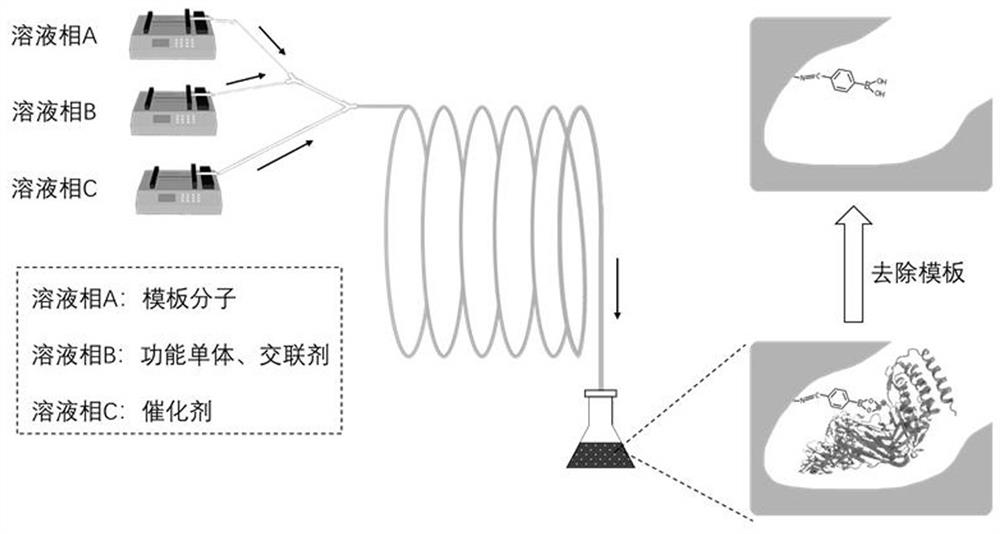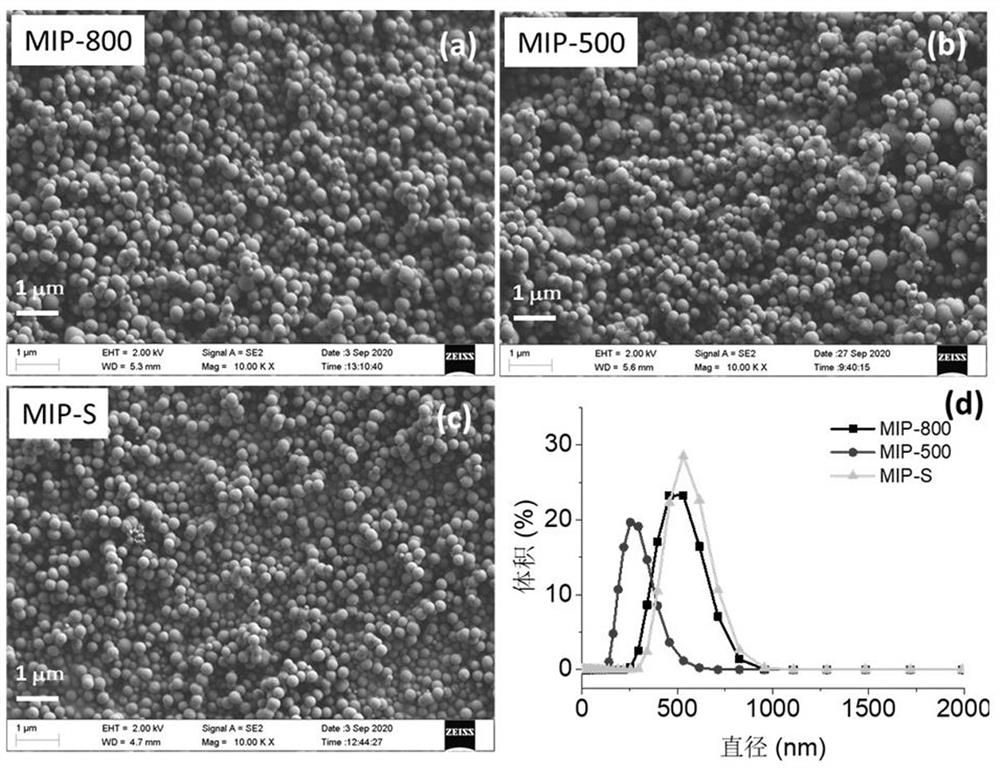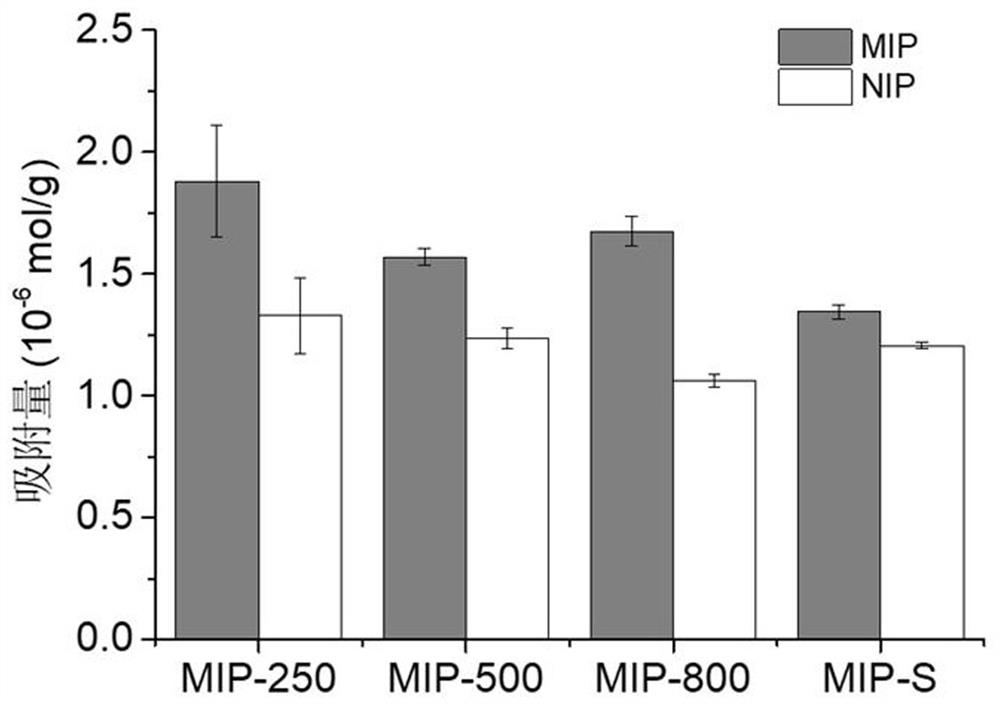Molecularly-imprinted nanoparticle for glycoprotein and synthesis method thereof
A nanoparticle and molecular imprinting technology, applied in the field of analytical chemistry, which can solve the problems of high polymerization reaction type and conditions, uneven diffusion, and particle agglomeration.
- Summary
- Abstract
- Description
- Claims
- Application Information
AI Technical Summary
Problems solved by technology
Method used
Image
Examples
Embodiment 1
[0031] In this example, a polytetrafluoroethylene capillary microfluidic reactor with an inner diameter of 800 μm and a length of 5 m was used. The functional monomer is a phenylboronic acid silylating reagent, and its preparation method is as follows: 3-formylphenylboronic acid (FPBA, 7.5 mg, 0.5mmol) is dissolved in 25 mL of ethanol, and then 3-aminopropyltriethoxy silane (APTES, 120 μL, 0.5 mmol), stirred at room temperature for 12 h, and finally removed the solvent ethanol by a rotary evaporator under vacuum to obtain phenylboronic acid silylating reagent FPBA-APTES, which can be used as Functional monomers are used to prepare glycoprotein molecularly imprinted polymers. The elution solution used was 100 mM acetic acid solution (containing 60% methanol, v / v) acetic acid solution.
[0032] Ovalbumin molecularly imprinted nanoparticles were prepared according to the following steps, and the synthesis process diagram can be found in figure 1 :
[0033] Step 1. Preparation...
Embodiment 2
[0038] Same as Example 1, the difference is that the inner diameter of the polytetrafluoroethylene capillary microfluidic reactor in this example is 500 μm.
[0039] The glycoprotein molecularly imprinted nanoparticles prepared in this example were named MIP-500. The yield of prepared MIP-500 was 17.8%.
Embodiment 3
[0041] Same as Example 1, the difference is that the inner diameter of the polytetrafluoroethylene capillary microfluidic reactor in this example is 250 μm.
[0042] The glycoprotein molecularly imprinted nanoparticles prepared in this example were named MIP-250. The yield of prepared MIP-250 was 13.6%.
PUM
 Login to View More
Login to View More Abstract
Description
Claims
Application Information
 Login to View More
Login to View More - R&D
- Intellectual Property
- Life Sciences
- Materials
- Tech Scout
- Unparalleled Data Quality
- Higher Quality Content
- 60% Fewer Hallucinations
Browse by: Latest US Patents, China's latest patents, Technical Efficacy Thesaurus, Application Domain, Technology Topic, Popular Technical Reports.
© 2025 PatSnap. All rights reserved.Legal|Privacy policy|Modern Slavery Act Transparency Statement|Sitemap|About US| Contact US: help@patsnap.com



